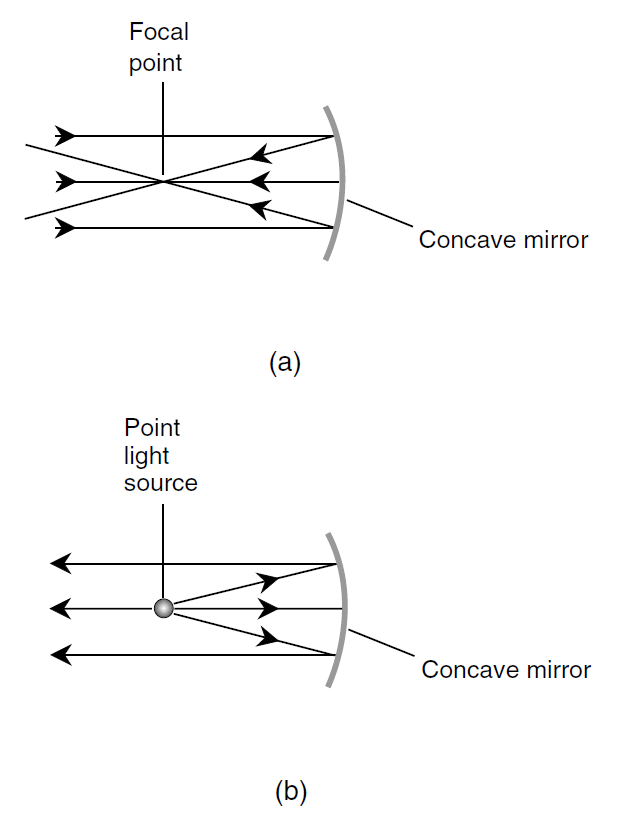
THE CONCAVE MIRROR
 المؤلف:
S. Gibilisco
المؤلف:
S. Gibilisco
 المصدر:
Physics Demystified
المصدر:
Physics Demystified
 الجزء والصفحة:
511
الجزء والصفحة:
511
 9-11-2020
9-11-2020
 3162
3162
THE CONCAVE MIRROR
A concave mirror reflects light rays in a manner similar to the way a convex lens refracts them. When incident rays are parallel to each other and to the axis of the mirror, they are reflected so that they converge at a focal point (Fig. 1a). When a point source of light is placed at the focal point, the concave mirror reflects the rays so that they emerge parallel (see Fig. 1b).

Fig. 1. (a) A concave mirror focuses parallel light rays to a point. (b) The same mirror collimates light from a point source at the focus.
The properties of a concave mirror depend on the size of the reflecting surface, as well as on the radius of curvature. The larger the light-gathering area, the greater is the light-gathering power. The smaller the radius of curvature, the shorter is the focal length. If you look at your reflection in a convex mirror, you will see the same effect that you would observe if you placed a convex lens up against a flat mirror.
Concave mirrors can have spherical surfaces, but the finest mirrors have surfaces that follow the contour of an idealized three-dimensional figure called a paraboloid. A paraboloid results from the rotation of a parabola, such as that having the equation y = x2 in rectangular coordinates, around its axis. When the radius of curvature is large compared with the size of the reflecting surface, the difference between a spherical mirror and a paraboloidal mirror (more commonly called a parabolic mirror) is not noticeable to the casual observer. However, it makes a big difference when the mirror is used in a telescope.
 الاكثر قراءة في مواضيع عامة في علم البصريات
الاكثر قراءة في مواضيع عامة في علم البصريات
 اخر الاخبار
اخر الاخبار
اخبار العتبة العباسية المقدسة


